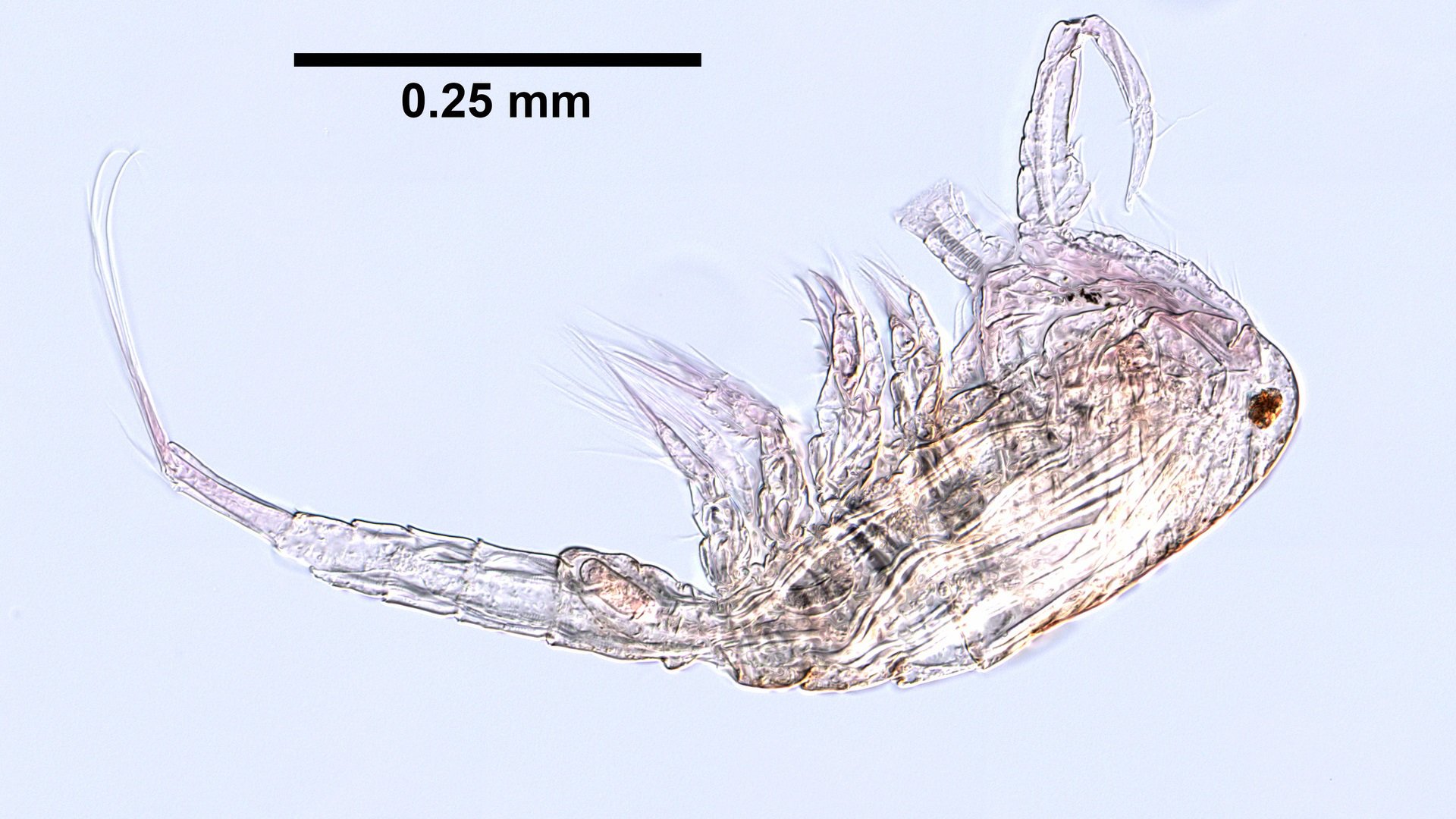Copepods have a clearly visible dark spot: this is their eye. This is where the name cyclops, referring to Greek mythology, comes from. This mini lobster uses its eye to wait in ambush for its prey.
Copepods have a clearly visible dark spot: this is their eye. This is where the name cyclops, referring to Greek mythology, comes from. This mini lobster uses its eye to wait in ambush for its prey.
Heartless
Like other copepod species, Cyclops strenuus has an exoskeleton. Because C. strenuus is so small, its exoskeleton is transparent. Another side effect of their size is that they are so small that all the oxygen from their environment can be directly absorbed into the cells. So they don't need lungs, gills or a heart.
Row, row, row your antennae
C. strenuus has six antennae, two at the front and four at the back of the body. The four at the back ensure that the animal can move very quickly with rowing movements. The microbe rows through the water towards its prey and away from danger. The angle at which the antennae are situated in relation to each other is an easy way to tell different Cyclops species apart.
Egg, larva, copepod
Copepods lay eggs. The female lays these eggs in a pouch that is attached to her body. When these eggs hatch, larvae called naupli hatch. These naupli look different from the full grown Cyclops, they consist of a head and tail with legs, without a body. It takes about a week for the naupli to reach maturity. Through metamorphosis they turn into an adult individual.

